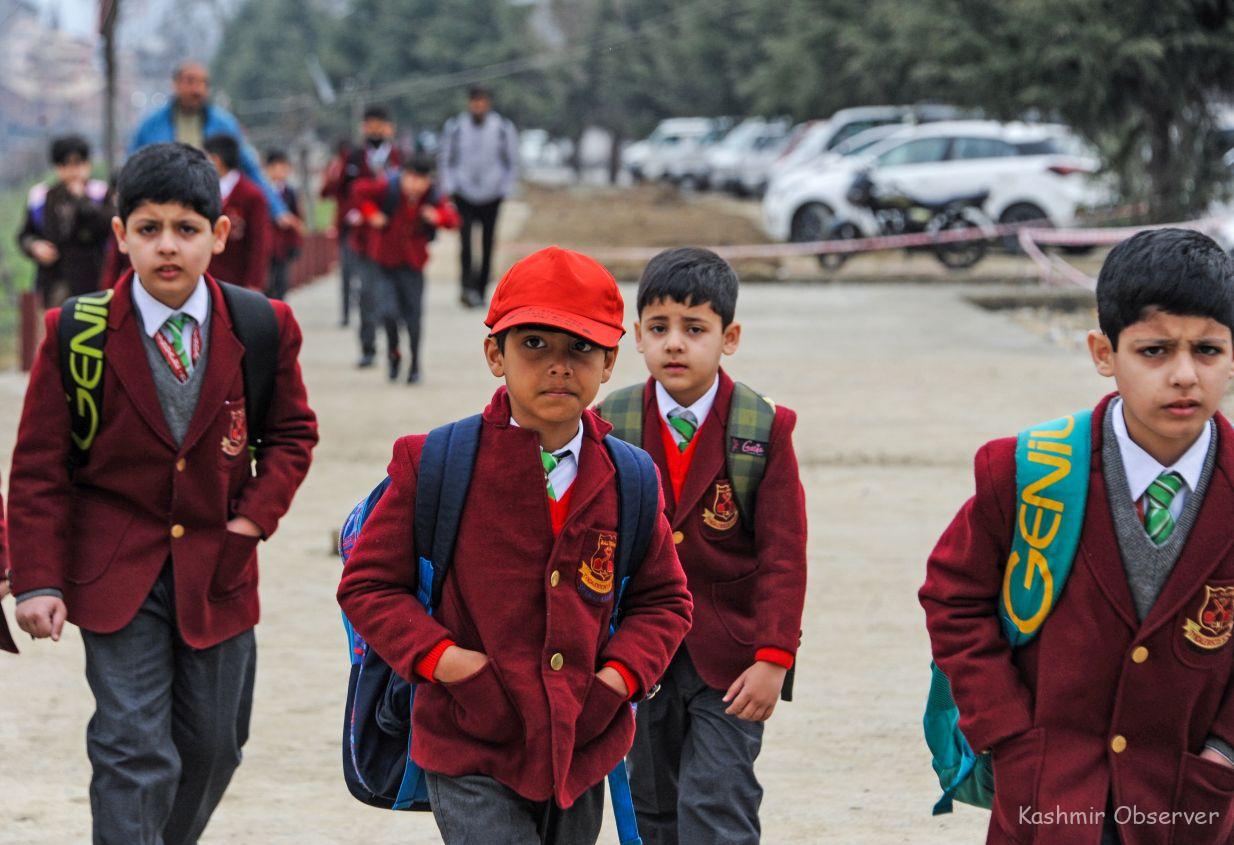
By Rajkumar Singh
Multidisciplinary education is an academic approach that integrates content and teaching methods from multiple disciplines or fields of study. In a multidisciplinary education program, students are exposed to knowledge, perspectives, and methodologies from various subject areas rather than focusing on a single discipline. The key features of multidisciplinary education include:
a. Integration of Disciplines: Multidisciplinary programs bring together knowledge from different academic disciplines to provide a more comprehensive understanding of a topic or problem.
b. Interconnected Learning: Students engage with diverse perspectives and methodologies, fostering a more holistic and interconnected view of the subject matter.
c. Collaborative Learning: Multidisciplinary education often encourages collaboration among students and faculty from different disciplines. This collaborative environment promotes the exchange of ideas and the development of a broader skill set.
d. Real-world Problem Solving: By drawing on insights from various disciplines, multidisciplinary education aims to equip students with the skills to tackle complex, real-world problems that may require a multifaceted approach.
e. Flexibility: Multidisciplinary programs are often flexible, allowing students to tailor their education to their interests and career goals by selecting courses from different disciplines.
Examples of multidisciplinary fields of study include environmental science, bioinformatics, and neuroscience, where knowledge from biology, chemistry, physics, mathematics, and other disciplines are integrated to address complex issues. This approach is contrasted with interdisciplinary and transdisciplinary education. In interdisciplinary education, different disciplines are brought together, but they may retain their distinct methodologies and perspectives. Transdisciplinary education goes a step further by creating a unified framework that transcends traditional disciplinary boundaries.
Aims and objects
The aims and objectives of multidisciplinary education encompass a broad range of goals designed to provide students with a comprehensive and well-rounded learning experience. Its key aims and objectives include:
a. Problem-Solving Skills: To cultivate effective problem-solving skills by exposing students to diverse approaches and methods, preparing them to tackle real-world challenges that often require multifaceted solutions.
b. Communication and Collaboration: To enhance communication and collaboration skills by providing opportunities for students to work in multidisciplinary teams, fostering effective interaction with individuals from various backgrounds. c. Personalized Learning Paths: To offer students the flexibility to tailor their education to their individual interests and career goals, allowing for a more personalized and meaningful learning experience.
d. Innovation and Creativity: To stimulate innovation and creativity by exposing students to a diversity of ideas and perspectives, encouraging them to think creatively and contribute to advancements in their chosen fields. d. Preparation for Emerging Fields: To prepare students for careers in emerging and interdisciplinary fields where a combination of knowledge and skills from different disciplines is increasingly valuable.
e. Global Perspectives: To develop a global perspective by integrating cultural, social, and economic considerations from various parts of the world, fostering an understanding of the interconnectedness of global issues.
f. Ethical Awareness: To promote ethical awareness and responsible decision-making by considering the ethical implications of knowledge and actions from different disciplinary perspectives.
Benefits of multidisciplinary education
Multidisciplinary education offers several benefits to students, educators, and the broader academic community:
a. Communication and Collaboration: Students in multidisciplinary programs often work in teams with individuals from various backgrounds. This fosters effective communication and collaboration skills, preparing them for a professional environment where interdisciplinary teamwork is common.
b. Interdisciplinary Thinking: Exposure to diverse disciplines encourages interdisciplinary thinking, enabling students to bridge gaps between fields and apply insights from one area to another. This skill is valuable in addressing complex, multifaceted issues.
c. Preparation for Emerging Fields: Many contemporary challenges and emerging fields require a combination of knowledge from different disciplines. Multidisciplinary education equips students with the interdisciplinary skills needed in fields such as data science, environmental sustainability, and biotechnology.
d. Increased Engagement: Learning experiences that integrate multiple perspectives and methodologies can enhance student engagement. The variety and richness of multidisciplinary content can make the educational experience more interesting and relevant to students.
e. Personalized Learning Paths: Multidisciplinary programs often offer flexibility, allowing students to tailor their education to their interests and career goals. This personalized approach can lead to greater satisfaction and motivation.
f. Innovation and Creativity: Exposure to diverse disciplines fosters a culture of innovation and creativity. By bringing together ideas from different fields, students may be more likely to generate novel solutions and contribute to advancements in various areas. In conclusion, multidisciplinary education provides a well-rounded learning experience that prepares students for the complexities of the modern world and encourages them to become adaptable, critical thinkers and problem solvers.
Multidisciplinary education and NEP-2020
The National Education Policy (NEP) 2020 in India is a comprehensive document that outlines the vision and goals for the country’s education system. It emphasizes several principles, including flexibility, multidisciplinary, and a holistic approach to learning. Regarding multidisciplinary education, the NEP 2020 encourages a shift away from rigid subject boundaries and promotes a more flexible and integrated approach to learning. Some key points related to multidisciplinary in the NEP 2020 include:
a. Multidisciplinary Education: The policy advocates for multidisciplinary education at both the school and higher education levels. It encourages the integration of subjects and the adoption of a more holistic and well-rounded curriculum.
b. Flexible Undergraduate Education: The NEP 2020 proposes a flexible undergraduate education structure, allowing students to choose a major and minor from different academic domains. This flexibility is intended to promote a multidisciplinary approach to higher education.
c. Interdisciplinary Research: The policy emphasizes the importance of promoting interdisciplinary research and collaboration across disciplines to address complex challenges and contribute to knowledge creation.
d. Vocational Education: The NEP 2020 recognizes the importance of integrating vocational education into mainstream education. This includes providing students with opportunities to acquire skills from various disciplines, enhancing their employability in diverse fields.
e. Critical Thinking and Inquiry-Based Learning: The policy emphasizes the development of critical thinking and analytical skills, encouraging an inquiry-based approach to learning. This aligns with the multidisciplinary approach, as students learn to analyse problems from various perspectives. It’s important to implement strategies related to multidisciplinary education in India. The successful implementation of the NEP 2020 depends on various factors, including the commitment of educational institutions, the training of teachers, and the allocation of resources.
- Dr. Rajkumar Singh is a Youth Motivator, presently Professor of Political Science along with Dean, Student’s Welfare (DSW), at B.N. Mandal University, Madhepura (Bihar), India. His 25 books published in addition to about 1000 articles in national and international journals and daily newspapers from 25 foreign countries
Follow this link to join our WhatsApp group: Join Now
Be Part of Quality Journalism |
Quality journalism takes a lot of time, money and hard work to produce and despite all the hardships we still do it. Our reporters and editors are working overtime in Kashmir and beyond to cover what you care about, break big stories, and expose injustices that can change lives. Today more people are reading Kashmir Observer than ever, but only a handful are paying while advertising revenues are falling fast. |
| ACT NOW |
| MONTHLY | Rs 100 | |
| YEARLY | Rs 1000 | |
| LIFETIME | Rs 10000 | |










